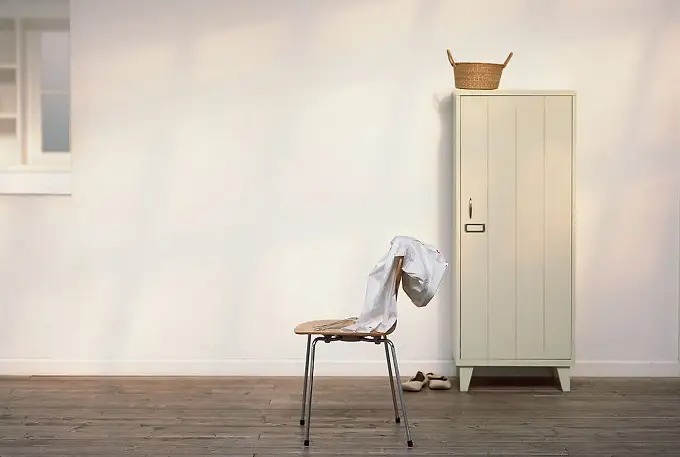15 things you should know about home maintenance
Introduction: When it comes to daily home maintenance, many people are just beginning to learn about this area, and their experience is definitely not as deep as that of housewives, but it is necessary to master some home maintenance common sense and skills.

Want to know how to maintain our various furniture? Editor Tugou has summarized some furniture maintenance secrets for housewives, hoping to be helpful to everyone.
1. What should I avoid when placing furniture?
Avoid placing furniture near heat sources such as heaters, fireplaces, or air conditioning vents. Rapid temperature changes can damage exposed parts of furniture. Also, keep furniture away from moisture and oil smoke. Furniture placed in the kitchen or bathroom must be treated to be moisture-proof and rust-proof.
2. Can I put anything on the partitions in the cabinet?
The objects placed on the shelves should be consistent with the function of the furniture. For example, avoid placing heavy books on the glass shelves of an antique cabinet. To reduce the possibility of tilting, place heavy objects near the bottom shelves, not the top. Professional manufacturers will also provide shelf load specifications and placement recommendations, so be sure to read them carefully.
3. What should I pay attention to when moving furniture?
When adjusting the position of furniture at home, lift it. Sliding and dragging it can deform or break its legs. Bookcases and china cabinets should be removed before lifting. If moving, cabinets should be disassembled for easy handling, and the shelves, casters, handles, and glass should be removed and packaged separately.
4. In what environment is the performance of solid wood the most stable?
Solid wood or wood-panel furniture is best stored in an environment with a temperature between 18 and 24 degrees Celsius and a relative humidity of 35 to 40 percent to prevent the wood from expanding and contracting, which can lead to cracking and warping. In the humid south, air conditioning can be used for dehumidification, while in the dry north, a humidifier can be used to adjust the humidity to a suitable range.
5. How to keep the sofa soft and flat?
We should fluff the seat cushions and pillows from time to time, which helps to adjust the density of the filling and even reduce the wear of the fabric. Especially when we often sit in the same position, we must frequently turn and swap the padding to help the filling return to its natural state, so that the sofa can maintain its original softness and flatness.
6. Is the load-bearing capacity of marble countertops invincible?
Marble isn't inherently strong no matter how it's used. When cut and used as a tabletop or countertop, especially in narrow, elongated pieces with insufficient support points, it can crack under excessive load. Therefore, avoid placing heavy objects on marble-top furniture and prevent heavy impact. When choosing a single countertop, avoid using a single piece longer than 2.4 meters.
7.How to clean bamboo and rattan?
Bamboo and rattan furniture has many curves and crevices, which easily harbor dirt. When cleaning, first use a brush to remove dirt from the crevices. For heavy stains, use detergent or baking soda. After wiping white rattan, apply a little vinegar to neutralize the alkalinity and prevent discoloration. Old dirt can be wiped with salt water, which both removes dirt and maintains the furniture.
8. Does furniture like to bask in the sun as much as we do?
Avoid exposing furniture to direct sunlight for extended periods. Whether it's wood, fabric, leather, or bamboo, continuous exposure to the sun can cause cracks in the surface coating, fade, or darken the color. It can also damage the fibers of textiles, causing them to fade and deteriorate. If this is unavoidable, use curtains to block out the sunlight.
9. Is it a good idea to use plastic mats to protect the table?
Some people use plastic tablecloths or plastic table mats to protect the paint on the table, but this is counterproductive. The chemical components in the plastic will penetrate the coating, causing dents, softening and fading, and even sticking to the table top, which may tear off the paint when removed.

10. How should table flakes be stored?
Some dining tables come with a springboard (the short board in the middle of an extendable table) to extend the table for large gatherings. When not in use, the springboard should be wrapped in its original cover and stored flat in a dry, well-ventilated area, such as under a bed. Never store springboards in a damp basement or a hot attic, stand them upright, or stack them with heavy objects to prevent warping.
11. How to clean and maintain wooden furniture?
Dust can abrade wooden surfaces, so frequently use a clean, soft cotton cloth to remove dust. Dampen the cloth with water to reduce friction, prevent scratches, and attract dust. Avoid allowing moisture to remain on the surface. Use a dedicated cleaner once or twice a year, and polish no more frequently. Always be gentle and wipe in the direction of the wood grain.
12. Should I wash only the dirty sofa cushion covers?
It is best to use a vacuum cleaner or brush to remove surface dust from textile sofas weekly, as dust accumulated in the gaps will wear away the fabric fibers. When cleaning, be sure to clean both seats simultaneously, and don't just clean the seat covers that you think are the dirtiest. This may cause the overall fabric color to be inconsistent over time.
13. What should I do if liquid is spilled on furniture?
When any liquid is poured on furniture, the first step is to quickly absorb the liquid with a highly absorbent towel, chamois towel, paper towel, etc., especially if it is on textiles, you need to absorb it repeatedly several times, and then further process it according to the type of liquid and furniture. Do not wipe it with a cloth right away, as this will only expand the area of contamination.
14. Can metal furniture be simply wiped?
Stainless steel and iron also require gentle treatment. Wipe away dust with a soft, damp cloth first, then wipe away any remaining moisture with a dry cotton cloth. Keep them away from moisture, cooking fumes, and acidic or alkaline liquids. Occasionally, use gauze dipped in a little rust-proof oil or sewing machine oil for maintenance.
15.What are the key points in maintaining leather furniture?
When cleaning, wipe away dust and dirt with a soft, damp cloth. Once the water is almost dry, apply a leather polish evenly. This will moisturize and brighten the leather, preventing it from drying out, becoming brittle, and cracking. Keep pets away from leather, and remove any sharp accessories when you return home to avoid scratching the surface.
Have you all mastered these little tricks?
- furniture
- Home
- Life